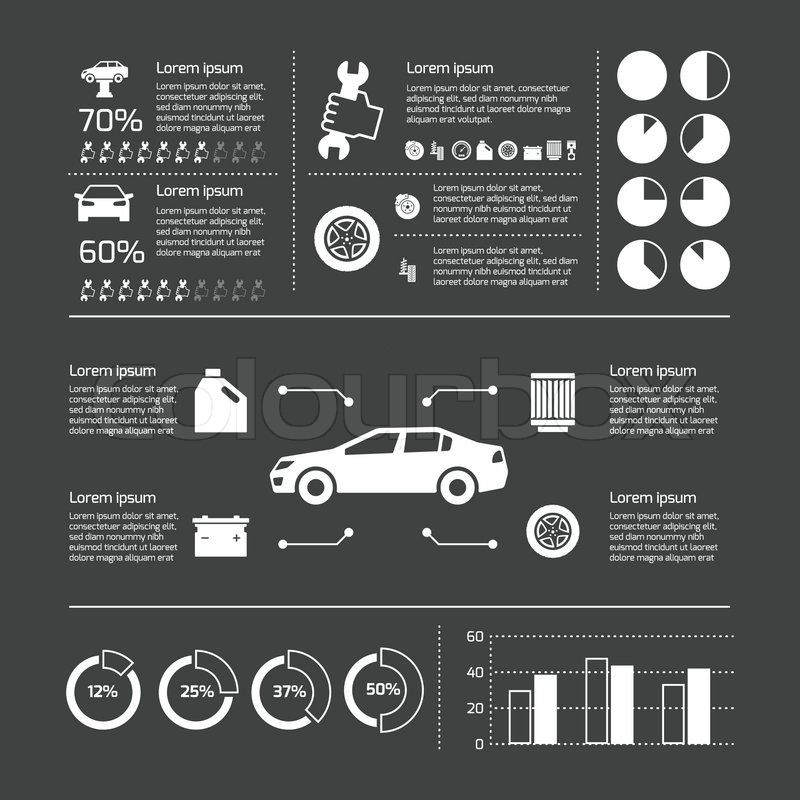Assessing Your Automobile'S Warning Indicators: What They Truly Share
Assessing Your Automobile'S Warning Indicators: What They Truly Share
Blog Article
Author-Lim Kejser
When you lag the wheel, those radiant caution lights on your dashboard can be a little bit difficult. Do you know what they're attempting to inform you regarding your car's health and wellness? Understanding the significance of these lights is crucial for your safety and security and the long life of your vehicle. So, the following time one of those lights turns up, would not you wish to understand its message accurately and take the needed actions to resolve it?
Common Caution Lights and Interpretations
Determine usual caution lights in your vehicle and understand their definitions to ensure safe driving.
The most common caution lights consist of the check engine light, which signals issues with the engine or emissions system. If this light begins, it's important to have your car inspected quickly.
The oil stress advising light indicates low oil stress, needing immediate focus to prevent engine damages.
A blinking battery light may recommend a malfunctioning charging system, possibly leaving you stranded if not attended to.
The tire stress surveillance system (TPMS) light alerts you to low tire pressure, impacting vehicle stability and gas performance. Neglecting this might bring about harmful driving conditions.
The abdominal muscle light indicates a trouble with the anti-lock braking system, endangering your capability to stop swiftly in emergency situations.
Finally, the coolant temperature advising light warns of engine overheating, which can result in severe damage otherwise solved promptly.
Comprehending these common warning lights will certainly assist you attend to problems promptly and preserve risk-free driving problems.
Value of Prompt Attention
Comprehending the usual caution lights in your cars and truck is just the first step; the importance of promptly resolving these cautions can not be highlighted enough to guarantee your safety when traveling.
When a warning light illuminates on your dashboard, it's your auto's means of communicating a prospective concern that needs focus. Disregarding these cautions can lead to extra extreme troubles later on, endangering your security and possibly costing you a lot more out of commission.
Trigger focus to advising lights can avoid malfunctions and mishaps. As an example, a flashing check engine light might indicate a misfire that, if left neglected, could create damage to the catalytic converter. Resolving this promptly can save you from an expensive repair work.
Similarly, a brake system alerting light might signal reduced brake fluid or worn brake pads, vital components for your security when driving.
DIY Troubleshooting Tips
If you observe a warning light on your dashboard, there are a few do it yourself troubleshooting pointers you can try before seeking expert aid.
specialist detailing is to consult your vehicle's manual to understand what the specific caution light suggests. Occasionally the concern can be as basic as a loose gas cap setting off the check engine light. Tightening car cleaning may deal with the trouble.
An additional typical problem is a low battery, which can set off various advising lights. Checking the battery connections for deterioration and guaranteeing they're secure might repair the problem.
If a warning light lingers, you can attempt resetting it by disconnecting the car's battery for a couple of minutes and then reconnecting it. In addition, inspecting your lorry's liquid degrees, such as oil, coolant, and brake liquid, can help troubleshoot cautioning lights related to these systems.
Conclusion
Finally, comprehending your automobile's caution lights is vital for maintaining your lorry running efficiently and safely. By promptly addressing these informs and recognizing what they imply, you can stay clear of pricey repair services and prospective failures.
Remember to consult your car's guidebook for particular details on each advising light and do something about it as necessary to make sure a trouble-free driving experience.
Keep notified, remain risk-free when traveling!
